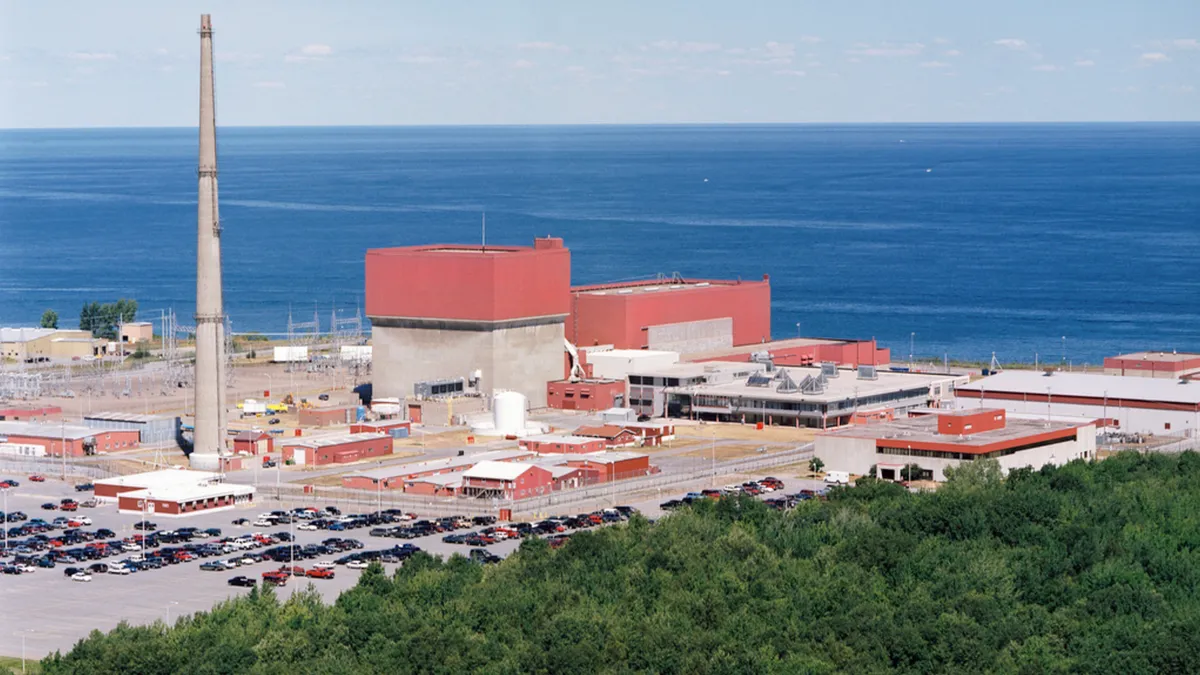Dive Brief:
- The New York Senate voted 32-28 in favor of a measure to fund Zero Emissions Credits aimed at saving the state's nuclear facilities, but some clean energy advocates say the subsidies would come at the expense of regional efforts.
- According to the Natural Resources Defense Council, S. 6651A would fund the state's ZEC program using clean energy funding administered by the New York State Energy Research and Development Authority (NYSERDA), including revenues from the state's participation in the Regional Greenhouse Gas Initiative (RGGI). Currently, the ZEC program is funded through commodity fees from ratepayer bills.
- The ZEC program has come under fire at the Federal Energy Regulatory Commission (FERC) from generators who say the program intrudes on federal jurisdiction of wholesale markets.
Dive Insight:
New York wants to save its nuclear fleet and the carbon-free energy they generate, but some clean energy advocates warn that how the state funds the ZEC program matters just as much.
NRDC said it "strongly opposes" the bill, which would "redirect New York’s RGGI revenues away from innovative clean energy programs in order to fund subsidies to nuclear power plants ... While nuclear power is low-carbon, it’s neither clean nor renewable, and it presents a host of potential risks and impacts."
NRDC said while it supports New York's legal authority to implement the ZEC program, the group is not in favor of it.
The Fitzpatrick, Ginna and Nine Mile nuclear plants are expected to produce 27.6 million MWh of carbon-free generation per year—energy which will be essential to meeting the state's goal of cutting greenhouse gas emissions 40% from 1990 levels by 2030, and 80% by 2050.
While opposition to the ZEC program has focused on whether credits overstep the state's authority and impact wholesale prices, proponents say they are designed to value the carbon-free attributes of the energy—not the actual power produced.
The ZECs will be determined by starting with the social cost of carbon and subtracting out benefits received from the Regional Greenhouse Gas Initiative, and then the amount by which the sum of the New York ISO Zone A Forecast Energy Price and ROS Forecast Capacity Price exceeds $39/MWh — the PUC's forecast for long-term avoided power costs.
Senate Bill 6651A was sponsored by Sen. John Flanagan (R). According to a sponsor's memo, the bill authorizes NYSERDA to "establish, calculate, and issue awards for the program to zero carbon emitters for their avoidance of carbon emission." The measure also requires the agency to submit an annual report on the program.
The bill would also require NYSERDA to "fund the program out of existing funding streams, while preventing them from increasing additional fees, rentals, penalties, or other charges."
But according to NRDC, taking funding from the RGGI program in particular is short-sighted. New York in particular has benefited more than $700 million and 9,000 jobs as a result of the multi-state greenhouse gas compact.















